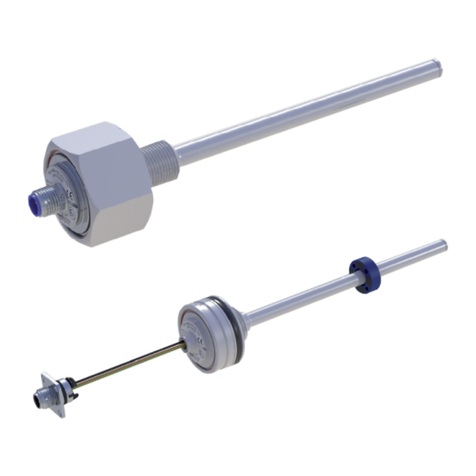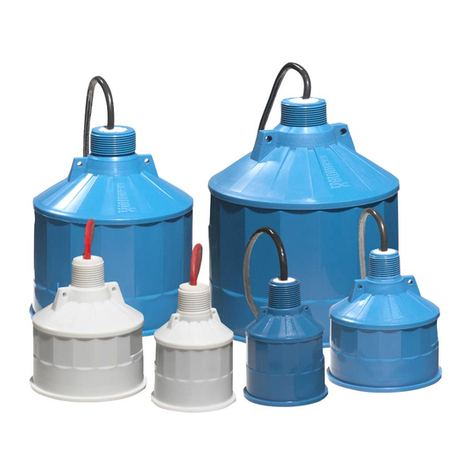epro PR 9268/60 Series Manual

Seventh edition
6140-00006
25 04 06
MMS
GB
DGebrauchsanleitung
Direction for use
PR 9268/60
PR 9268/70
X - X00
X - X00

©epro GmbH
Jöbkesweg 3
D48599 Gronau
Germany
All rights are strictly reserved
Alle Rechte vorbehalten
Reproduction or divulgation in any form whatsoever is not permitted without written authority from epro GmbH
Nachdruck, Vervielfältigung, digitale Verwendung jeglicher Art nur mit schriftlicher Genehmigung der epro GmbH
Issued by epro GmbH
Herausgegeben von epro GmbH
Printed in Germany
Gedruckt in Deutschland

Operating Manual PR 9268/60, PR 9268/70
CONTENTS
1. GENERAL................................................................................................................................... 4
1.1 I
NSTRUCTIONS ON USING THE
O
PERATING
M
ANUAL
..................................................................... 4
1.2 E
XPLANATION OF SYMBOLS
........................................................................................................ 4
1.3 L
IABILITY AND GUARANTEE
......................................................................................................... 4
1.4 I
NCOMING GOODS INSPECTION
.................................................................................................... 5
1.5 R
EPAIR AND
M
AINTENANCE
........................................................................................................ 6
1.6 S
TORAGE AND
T
RANSPORT
........................................................................................................ 6
1.7 D
EVICE DISPOSAL
...................................................................................................................... 6
1.8 C
ONTACT
.................................................................................................................................. 6
2. SAFETY INSTRUCTIONS .......................................................................................................... 7
2.1 O
WNER
’
S RESPONSIBILITY
......................................................................................................... 7
3. PURPOSE AND APPLICATION................................................................................................. 8
4. TECHNICAL DATA..................................................................................................................... 9
4.1 T
YPES
....................................................................................................................................... 9
4.2 E
XPLOSION PROTECTION
.......................................................................................................... 12
5. HINTS FOR MOUNTING AND INSTALLATION ...................................................................... 13
6. MAINTENANCE, REPAIR AND HINTS FOR FAULT FINDING............................................... 13
7. ALLGEMEINES ........................................................................................................................ 14
7.1 H
INWEISE ZUR
B
ENUTZUNG DER
G
EBRAUCHSANLEITUNG
......................................................... 14
7.2 S
YMBOLERKLÄRUNG
................................................................................................................ 14
7.3 H
AFTUNG UND
G
EWÄHRLEISTUNG
............................................................................................ 14
7.4 W
ARENEINGANGSKONTROLLE
.................................................................................................. 14
7.5 R
EPARATUR UND
W
ARTUNG
..................................................................................................... 16
7.6 L
AGERUNG UND
T
RANSPORT
.................................................................................................... 16
7.7 E
NTSORGUNG DES
G
ERÄTES
................................................................................................... 16
7.8 K
ONTAKT
................................................................................................................................. 16
8. SICHERHEITSHINWEISE ........................................................................................................ 17
8.1 V
ERANTWORTUNG DES
B
ETREIBERS
......................................................................................... 17
9. ZWECK UND ANWENDUNG ................................................................................................... 18
10. TECHNISCHE DATEN.............................................................................................................. 19
10.1 E
XPLOSIONSSCHUTZ
............................................................................................................ 21
11. MONTAGE- UND ANSCHLUSSHINWEISE............................................................................. 22
12. WARTUNG, REPARATUR UND FEHLERSUCHHINWEISE................................................... 22
13. ABBILDUNGEN........................................................................................................................ 23

Operating Manual PR 9268/60, PR 9268/70
General Seite 4
1. GENERAL
1.1 Instructions on using the Operating Manual
This operating manual contains information concerning the proper and correct use of the
PR 9268/60 and PR 9268/70 bearing vibration sensors.
For correct and safe use of this device, the operating manual must have been read com-
pletely prior to starting installation and operating of the device. In particular, all safety instruc-
tions contained in the manual must be complied with.
Do not provide the device to third parties without including the operating manual.
Please note
For correspondence concerning this device we request that you specify device
type and device number as imprinted on the type plate.
1.2 Explanation of symbols
This symbol identifies text, that contains important information.
Instructions, which, if not followed, result in functional disturbances and incor-
rect measurements, without damaging the machine, are identified with this
symbol.
Safety and warning instructions are identified with this symbol.
Failure to follow such instructions, results in material damage or personal in-
jury.
1.3 Liability and guarantee
epro GmbH is not liable for damage that occurs due to improper use. Proper use also in-
cludes knowledge of, and compliance with this operating manual.
Customer changes to the device that have not been expressly approved by epro, will result in
loss of guarantee.
Due to continuous research and further development, epro has reserved the right to change
technical specifications without notice.
i
i

Operating Manual PR 9268/60, PR 9268/70
General Seite 5
1.4 Incoming goods inspection
Check the contents of the shipment to ensure that it is complete, and visibly inspect the
goods to determine if the device may possibly have been damaged during transport. The fol-
lowing parts are included in the scope of delivery and must be included in the shipment:
1. Bearing vibration sensor PR 9268/60 or PR 9268/70
2. Operating manual for installation and use of the sensor
3. Harting socket completely including female contact strip, housing and cover
4. Mounting plate for mechanical adaption to MMG 033 / MMG 1033
5. Mounting set with 5 hexagon socket screws M6 x 20 including washers
6. M20 cable gland
Scope of delivery PR 9268/60, PR 9268/70
If the contents is incomplete, or if any defects are observed, a complaint must be filed with
the carrier immediately. Moreover, the responsible epro sales organization must be informed
to enable repair or replacement of the device. Repairs or calibration that may be required, are
only possible in the epro factory.
In this case a non-detachable tag with customer name and defect observed must be at-
tached to the device.
Address: epro GmbH
Warenannahme Reparatur
Jöbkesweg 3
D-48599 Gronau

Operating Manual PR 9268/60, PR 9268/70
General Seite 6
1.5 Repair and Maintenance
PR 9268 bearing vibration sensors do not require any maintenance during operation.
1.6 Storage and Transport
The devices should only be transported and stored in their factory packaging or equivalent
packaging. Environmental conditions for storage and transport are specified in the technical
data (section “Technical data”).
1.7 Device disposal
If no return or disposal agreements have been made, then after professional dismantling
components must be recycled:
•Scrap metallic material remnants.
•Take plastic elements to plastic recycling facilities.
•Sort the other components for disposal, based on material condition.
The national regulations governing disposal and environmental protection apply.
epro offers all Machine Monitoring Systems (MMS) customers the possibility, of taking back
free of charge the components delivered by epro after their useful life, to dispose of them in a
proper manner.
1.8 Contact
In case of defects please contact:
epro GmbH
Jöbkesweg 3
D 48599 Gronau
Germany
Customer Support
Telefon: +49 (0) 2562.709 236
+49 (0) 2562 709 237
Fax: +49 (0) 2562 709 256
Environmental hazards !
Electrical w
aster and electronic components are subject to treatment as
special waste and should only be disposed by approved specialized
companies.

Operating Manual PR 9268/60, PR 9268/70
Safety instructions Seite 7
2. SAFETY INSTRUCTIONS
The sensors left the factory in perfect condition, relative to technical safety. To maintain this
condition and for hazard-free operation all of the following instructions in this manual must be
followed carefully.
The correct and safe use of this device requires, that operating and service personnel is fa-
miliar with generally valid safety guidelines, complies with them and heeds the special safety
comments that are listed in this manual. Where necessary, points on the device that are
safety-sensitive, are marked.
Because the device is electrical operating material it should only be com-
missioned and operated by instructed personnel. Repair is on possible at
epro.
2.1 Owner’s responsibility
If there is reason to suspect that hazard-free operation, and thus adequate machine protec-
tion is no longer possible, then the device must be taken out of service and safeguarded from
unintentional operation. This is the case
- if the device shows visible damage
- if the device no longer works
- after any type of overload (e.g. storage, transport) that exceeds permissible limits.
i

Operating Manual PR 9268/60, PR 9268/70
Purpose and application Seite 8
3. PURPOSE AND APPLICATION
The electro-dynamic transducers PR 9268/60 and PR 9268/70 serve the measurement of
absolute vibrations. They operate on the seismic measurement principle. A measuring coil,
suspended on membrane springs, is the seismic mass of the transducer. On operating
above the resonance frequency, the seismic mass will remain at rest. The relative motion be-
tween the transducer housing and the voice coil generates a voltage signal proportional to
the vibration velocity.
Robust construction and a splash-proof housing of stainless steel permit the use of the trans-
ducer in hostile environments with temperatures up to 200°C. As part of the epro - Machine
Monitoring System the transducers are particularly suitable for vibration measurement and
monitoring at machines. The sensitivity of 22.0 mV/(mm/s) enables the transducer to be con-
nected to the epro - Machine Monitoring Systems MMS 6000 and MMS 3000 as well as to
devices of the RMS 700 system.
An electric adaption circuitry in the connector offers another sensitivity of 16.7mV/(mm/s)
thus enabling the use of the transducers PR 9268/60 and PR 9268/70 as replacement for the
MMG 033 / 1033 sensors and for the use with measuring amplifiers of the MMG family such
as MMG 500, MMG 1000 and of the LM-series of the AEG Kanis product range. The selec-
tion of the electric sensitivity is made by using different connection points in the Harting con-
nector (refer also Fig. 4).
The transducer PR 9268/60 is specified for vertical mounting (±60°) and the PR 9268/70 for
horizontal direction (±30°). If the transducer is to be mounted in a direction different to the
set measuring direction, it is recommended using a lifting current according to the angle de-
viation. This lifting current, adjusted correctly regarding value and polarity, lifts resp. drops the
seismic mass to provide symmetrical motion of the measuring coil between the stops.
An adapter plate for the mechanical adaption to holders of MMG 033 / MMG 1033 transduc-
ers is available as standard accessory (see fig. 3).

Operating Manual PR 9268/60, PR 9268/70
Technical Data Seite 9
4. TECHNICAL DATA
4.1 Types
PR 9268/ XX
X
-XXX
60 Sensor PR 9268 for vertical measuring direction
70 Sensor PR 9268 for horizontal measuring direction
cable length
X
0 = 3m, 1 = 5m, 2 = 8m, 3 = 10m
all with flexible protection tube
cable length
X
4 = 3m, 5 = 5m, 6 = 8m, 7 = 10m
without protection tube
connector
-XXX - 000 with 6-pole Harting Plug and socket
- 100 without plug and socket, with open cable end
Measuring principle low tuned measuring principle for absolut vibrations
Mechanical / electrical conversion: electro-dynamic
Measuring direction PR 9268/60: vertical
PR 9268/70: horizontal
Max. deviation from nominal measuring direction:
without lifting current PR 9268/60: ±30°; PR 9268/70: ±10°
with lifting current** PR 9268/60: ±60°; PR 9268/70: ±30°
** without lifting current, the accuracy is reduced
Operation ranges
Frequency range 10 Hz...1000Hz
Vibration amplitude at nominal
mounting position: ±1,5 mm
Limit stops ±2 mm
Permissible acceleration
in measuring direction: 10 g continuous, 20 g short-time
in transverse direction: 2g
Sensitivity
Nominal value at 20 °C and 80Hz
Pin 3, for 100kΩelectrical load 22 mV per mm/s, ±5%
Pin 1, for 50kΩelectrical load 16,7mV per mm/s, ±5%
Pin 4, for 20kΩelectrical load 16,7mV per mm/s, ±5%
Linearity error of the sensitivity < 2 %
Natural frequency at 20 °C
(without damping) 10,0 Hz ± 1 Hz
Transverse sensitivity 0,1 at 80 Hz

Operating Manual PR 9268/60, PR 9268/70
Technical Data Seite 10
Operation range at nom. mounting position refer to nomogram of the interdependence be-
tween vibration amplitude, velocity, acceleration and frequency (Fig. 2).
Electrical Data
Resistance values
Measuring circuit pin 3 (statical): 2760 Ω±10 %
Measuring circuit pin 3 at 80Hz: 1700 Ω±10 %
Measuring circuit pin 1 (statical): 3260 Ω±10 %
Measuring circuit pin 4 (statical): 3180 Ω±10 %
Active inductance: < 200 mH
Active capacity incl. cable: < 2 nF
Insulation resistance: > 100 MΩ(Test voltage < 100 V DC)
Recommended lifting current for installation
deviating from nominal measuring direction 1,0 mA for 60° with PR 9268/60
resp. for 30° with PR 9268/70
Environmental Conditions
Operating temperature range
Transducer without connector: -20....+200 °C
short time (< 4 hours): up to 220 °C
for connector: -40....+100 °C
Temperature range for storage and transport
without packing: -40....+100 °C
with packing: -40....+70 °C
Relative humidity: 0...100 %
(without condensation in housing
and plug)
Protection class (splash proof) IP 65
Housing
Housing-dimensions see Fig. 3
Housing-material: stainless steel
Connection cable: 3 x 0,5mm², 3m long,
screened, sheeting PTFE
Metal protection hose stainless steel
Connector: 6 pole Harting-connector with
Integrated resistor network
Weight:
(net, incl. cable, connector and plug) 1050 g
Weight of transducer only < 400 g (without cable and connector)
Weight of transducer incl. packing 1600 g

Operating Manual PR 9268/60, PR 9268/70
Technical Data Seite 11
Spare parts and accessories
5 screws M6 x 20, DIN 912-A2
5 spring washers A6, 4 DIN 6798
5 washers A6, 4 DIN 125 NRST
Mounting plate für exchange to MMG 1033 or 033 2179-20053
Harting socket 6-pole, complete 5322 264 40204

Operating Manual PR 9268/60, PR 9268/70
Explosion protection Seite 12
4.2 Explosion protection
Specifications according to the EC-Design Test Certificate for PR 9268/6xx, /7xx
On using safety barriers, the installation in
hazardous areas is possible
The standards EN 50014 and EN 50020 are
met
Intrinsic safety II2G, EEx ib IIC T4, Ta < 125°C for the sensor
and Ta < 100°C for the connector
II2G, EEx ib IIC T3, Ta < 190°C for the sensor
and Ta < 100°C for the connector
Certificate PTB 05 ATEX 2057 X
Safety barrier, example for II 2G (Fig. 4): company Stahl, type 9001/02-093-003-101
For protection type intrinsic safety EEx ib IIC,
only for connection to certified intrinsic safe
electrical circuits with the maximum values:
U
i
=
I
i
=
P
i
=
When dimensioning the electrical specifica-
tions, the effective inductance Li and capaci-
tance Ci of the transducer are taken into
account.
18,6 V
6 mA
110 mW
Caution:
The permission for the operating in explosive areas does only apply for
the sensors
with metal protection hose, these are the types PR9268/(6,7)0(0-3)-000.
Sensors of type PR 9268/(6,7)0(4-7)-000, without metal protection hose, are not ap-
proved for the operating in explosive areas.
Concentrated inductivities and capacities in the supply circuit are not permitted.
To observe the explosion protection, a mechanically reliable installation of the sensor
at the measuring object must be ensured and a maximum acceleration of 10 g must
not be exceeded.

Operating Manual PR 9268/60, PR 9268/70
Hints for mounting and installation Seite 13
5. HINTS FOR MOUNTING AND INSTALLATION
Caution: Do not subject the transducer to hard shocks and do not drop it.
This could lead to internal damages and thus to impairment or loss of sensi-
tivity.
The transducers are to mount on flat and clean surfaces. The mounting screws have to be
tightened firmly to prevent vibration of the transducer housing.
The Harting-connectors of the PR 9268/60 and /70 transducers contain a resistor network.
The connector may only be mounted in environments with temperatures not higher than
100°C. The connector must not be opened.
It is recommended to use the attached screws M6x20 with washers and spring washers of
stainless steel.
Install the cable without torsion and elongation and protect it against damage. Fix the metal
protection hose as closely as possible to the transducer by using a clamp.
Connect pin 5 of the Harting plug only to protective earth if the transducer housing is
mounted without earth-connection.
The metal protection hose is insulated against cable screen and transducer
housing.
6. MAINTENANCE, REPAIR AND HINTS FOR FAULT FINDING
During operation the vibration transducers PR 9268 do not require any maintenance. High-
quality materials and, as far as permitted considering the required sensitivity, a robust con-
struction ensures an trouble free operation and a long service life even in hostile environ-
ments.
If, despite of it, a problem occurs, the following tests permit a first fault analysis:
Resistance measurement pins 2 - 3: 3270 Ω
Insulation resistance of coil connections
against screen and housing: >1 MΩ, test voltage max. 500V d.c.
Connect an AC-millivoltmeter to the coil connections and shake the transducer gently in
measuring direction. Now, a voltage of up to approx. 1 V a.c. can be generated.
Due to the sealed housing, the high-temperature transducers PR 9268/60 and /70 cannot be
repaired. In case of a defect, they have to be replaced.
In case of defects to the housing, protection hose, cable and/or connector the transducer
must be shut down and replaced immediately.
Sensors, that are operated in hazardous areas, may only be re-
paired in the factory, otherwise the permission for the operation ac-
cording to the test certificate lapses.
i
i

Gebrauchsanleitung PR 9268/60, PR 9268/70
Allgemeines Seite 14
7. ALLGEMEINES
7.1 Hinweise zur Benutzung der Gebrauchsanleitung
Die vorliegende Gebrauchsanleitung enthält Informationen über den bestimmungsgemäßen
und korrekten Einsatz der PR 9268/60 und PR 9268/70 Lagerschwingungssensoren.
Für den korrekten und sicheren Gebrauch der Geräte ist es erforderlich, dass vor Beginn der
Installationsarbeiten, die Gebrauchsanleitung vollständig gelesen wird. Es ist wichtig, dass al-
le Sicherheitshinweise der Anleitung genau beachtet werden.
Bitte beachten
Bei Schriftwechsel über dieses Gerät wird gebeten, Typen- und Gerätenummer,
wie auf dem Typenschild aufgedruckt, anzugeben.
7.2 Symbolerklärung
Dieses Symbol kennzeichnet Textstellen, die wichtige Informationen enthalten.
Hinweise, die bei Nichtbeachtung zu Funktionsstörungen und Fehlmessun-
gen führen, sind mit diesem Symbol gekennzeichnet.
Sicherheits- und Warnhinweise sind mit diesem Symbol gekennzeichnet.
Nichtbeachtung solcher Hinweise führt zu Sachbeschädigungen oder Perso-
nenschäden.
7.3 Haftung und Gewährleistung
epro GmbH haftet nicht für Schäden, die durch unsachgemäße Verwendung der Sensoren
entstehen. Zur sachgemäßen Verwendung gehören auch Kenntnis und Beachtung dieser
Gebrauchsanleitung.
Jegliche Veränderungen am Gerät durch den Kunden, die nicht ausdrücklich von epro GmbH
genehmigt wurden, führen zum Verlust der Gewährleistung.
Auf Grund ständiger Forschung und Weiterentwicklung, behält epro sich das Recht vor, tech-
nische Spezifikationen ohne Mitteilung zu ändern.
7.4 Wareneingangskontrolle
Überprüfen Sie den Inhalt der Sendung auf Vollständigkeit und nehmen Sie eine Sichtkon-
trolle vor, um festzustellen, ob das Gerät während des Transports möglicherweise beschä-
digt wurde. Folgende Teile gehören zum Lieferumfang und müssen in der Sendung enthalten
sein:
i
i

Gebrauchsanleitung PR 9268/60, PR 9268/70
Allgemeines Seite 15
1. Lagerschwingungssensor PR 9268/60 bzw. PR 9268/70
2. Gebrauchsanleitung für Installation und Gebrauch des Sensors
3. Harting Buchse komplett mit Federleiste, Gehäuse und Deckel
4. Montageplatte für mechanische Adaption MMG 033 / MMG 1033
5. Montagesatz mit 5 Innensechskantschrauben M6 x 20 und Unterlegscheiben
6. Kabeldurchführung M20
Lieferumfang PR 9268/60, PR 9268/70
Wenn der Inhalt unvollständig ist oder wenn irgendwelche Defekte wahrgenommen werden,
muss beim Überbringer sofort reklamiert werden. Außerdem muss die zuständige epro Ver-
kaufsstelle verständigt werden, um Reparatur oder Ersatz des Gerätes zu ermöglichen.
Eventuell erforderliche Reparaturen sind nur im Werk von epro möglich.
In diesem Fall, den Sensor mit unverlierbarem Anhänger mit Kundennamen und festgestell-
ter Beanstandung versehen und an folgende Adresse schicken:
Anschrift: epro GmbH
Warenannahme Reparatur
Jöbkesweg 3
D-48599 Gronau

Gebrauchsanleitung PR 9268/60, PR 9268/70
Allgemeines Seite 16
7.5 Reparatur und Wartung
Die Lagerschwingungssensoren PR 9268 benötigen während des Betriebes keinerlei War-
tung.
7.6 Lagerung und Transport
Die Geräte dürfen nur in ihrer Verpackung ab Werk oder in einer gleichwertigen Verpackung
gelagert und transportiert werden. Die zulässigen Temperaturen für Lagerung und Transport
sind in den Umgebungsbedingungen in Kapitel „Technische Daten“ spezifiziert.
7.7 Entsorgung des Gerätes
Ist die Lebensdauer des Gerätes abgelaufen oder soll das Gerät aus einem anderen Grund
ersetzt und nicht mehr in Gebrauch genommen werden, so ist es sachgemäß zu entsorgen.
Dies muss gemäß den aktuell geltenden Vorschriften für die Entsorgung von Elektronikteilen
von Kunden oder Dritten durchgeführt werden, die im Besitz des Gerätes sind.
Sofern keine Rücknahme- oder Entsorgungsvereinbarungen getroffen wurden, sind zerlegte
Bestandteile nach sachgerechter Demontage der Wiederverwertung zuzuführen:
•Metallische Materialreste verschrotten.
•Plastikelemente zum Kunststoffrecycling geben.
•Übrige Komponenten nach Materialbeschaffenheit sortiert entsorgen.
Es gelten die nationalen Entsorgungs- und Umweltschutzbestimmungen.
epro bietet allen Kunden aus dem Bereich Machine Monitoring System (MMS) an, die von
epro gelieferten Komponenten nach Ablauf der Nutzung kostenfrei zurückzunehmen, um sie
einer fachgerechten Entsorgung zuzuführen.
7.8 Kontakt
Im Falle von Störungen wenden Sie sich bitte an:
epro GmbH
Jöbkesweg 3
D 48599 Gronau
Germany
Customer Support
Telefon: +49 (0) 2562.709 236
+49 (0) 2562 709 237
Fax: +49 (0) 2562 709 256
Gefahren für die Umwelt!
Elektroschrott und Elektronikkomponenten unterliegen der Sondermüll-
behandlung und dürfen nur von zugelassenen Fachbetrieben entsorgt
werden.

Gebrauchsanleitung PR 9268/60, PR 9268/70
Sicherheitshinweise Seite 17
8. SICHERHEITSHINWEISE
Die Sensoren haben das Werk in sicherheitstechnisch einwandfreiem Zustand verlassen.
Zur Erhaltung dieses Zustands und seines gefahrlosen Betriebs müssen die nachfolgenden
Hinweise sorgfältig beachtet werden.
Für den korrekten und sicheren Gebrauch dieses Gerätes ist es erforderlich, dass Bedien-
und Servicepersonal die allgemein gültigen Sicherheitsvorschriften kennen, beachten und
den besonderen Sicherheitsvermerken, die in dieser Gebrauchsanleitung aufgeführt sind, fol-
gen. Wo notwendig, sind sicherheitsempfindliche Stellen am Gerät selbst gekennzeichnet.
Da das Gerät ein elektrisches Betriebsmittel ist, dürfen Inbetriebnahme und
Bedienung nur durch eingewiesenes Personal erfolgen. Eine Reparatur ist
nur im epro Werk möglich.
8.1 Verantwortung des Betreibers
Wenn anzunehmen ist, dass ein gefahrloser Betrieb und damit ein einwandfreier Maschinen-
schutz nicht mehr möglich ist, so ist das Gerät ausser Betrieb zu setzen und gegen unbeab-
sichtigten Betrieb zu sichern. Dieser Fall tritt ein,
- wenn das Gerät sichtbare Beschädigungen aufweist
- wenn das Gerät nicht mehr arbeitet
- nach Überbeanspruchungen jeglicher Art (z.B. Lagerung, Transport), die die
zulässigen Grenzen überschreiten.
i

Gebrauchsanleitung PR 9268/60, PR 9268/70
Zweck und Anwendung Seite 18
9. ZWECK UND ANWENDUNG
Die elektrodynamischen Aufnehmer PR 9268/60 und PR 9268/70 dienen der Erfassung von
absoluten Schwingungen. Sie arbeiten nach dem seismischen Messverfahren. Als seismi-
sche Masse dient ein Spulensystem, das an Membranfedern im Sensor aufgehängt ist. O-
berhalb der Resonanzfrequenz des Sensors verharrt die seismische Masse in Ruhe. Durch
die Relativbewegung des Sensors zur ruhenden Spule wird eine zur Schwinggeschwindigkeit
proportionale Spannung induziert.
Die robuste Bauweise der Aufnehmer und das spritzwasserdichte Gehäuse aus rostfreiem
Stahl erlauben den Einsatz unter rauen Bedingungen und Umgebungstemperaturen bis
200 °C. Als Teil des epro - Maschinenüberwachungsprogramms eignen sie sich besonders
zur Vibrationsmessung und -überwachung von Maschinen.
Die Empfindlichkeit des Sensors von 22,0 mV/(mm/s) ist für den Betrieb mit den epro - Ma-
schinenüberwachungssystemen MMS 6000 und MMS 3000 sowie der RMS 700 Serie aus-
gelegt.
Eine im Harting-Stecker untergebrachte Anpassung erlaubt den Anschluss der Aufnehmer
PR 9268/60 und PR 9268/70 als Ersatz für MMG 033/MMG 1033 Sensoren wie auch den
Anschluss an andere Messverstärkersysteme mit einer Empfindlichkeit von 16,7 mV/(mm/s)
wie MMG 500, MMG 1000 und LM - Serie des AEG - Kanis Programms. Die Wahl der Emp-
findlichkeit und Anpassung erfolgt durch Verwendung unterschiedlicher Anschlusspunkte in
der Harting Anschlussbuchse, siehe Fig. 4.
Der Aufnehmer PR 9268/60 ist für die vertikale Messrichtung (±60°), der PR 9268/70 für die
horizontale Messrichtung (±30°) vorgesehen. Bei einer von der Nennmessrichtung abwei-
chender Einbaulage wird die Einspeisung eines Hebestromes entsprechend des abweichen-
den Winkels empfohlen. Der Hebestrom durch die Messspule hebt bzw. senkt die seismi-
sche Masse und sorgt bei richtiger Größe und Polarität für eine optimale Mittellage.
Zur Anpassung an Aufnehmerhalterungen für Aufnehmer aus dem AEG - Kanis Programm
wie MMG 033 und MMG 1033 wird eine Adapterplatte mitgeliefert (siehe Fig. 5).

Gebrauchsanleitung PR 9268/60, PR 9268/70
Technische Daten Seite 19
10. TECHNISCHE DATEN
PR 9268/ XX X
-XXX
60 Sensor PR 9268 für vertikale Messrichtung
70 Sensor PR 9268 für horizontale Messrichtung
Kabellänge
X
0 = 3m, 1 = 5m, 2 = 8m, 3 = 10m alle mit flex. Schutzschlauch
Kabellänge
X
4 = 3m, 5 = 5m, 6 = 8m, 7 = 10m alle ohne flex. Schutzschlauch
Anschluss
-XXX -000 mit 6-poligem Harting Stecker und Buchse
-100 mit offenen Kabelenden, ohne Stecker und Buchse
Messprinzip tief abgestimmtes Messverfahren
für absolute Schwingungen
Mechan./elektr. Messsignalumwandlung: elektrodynamisch
Nennmessrichtung: PR 9268/60 Vertikal
PR 9268/70 Horizontal
Von Nennmessrichtung abweichende Montage
ohne Hebestrom PR 9268/60: ±30°; PR 9268/70: ±10°
mit Hebestrom** PR 9268/60: ±60°; PR 9268/70: ±30°
** ohne Hebestrom mit eingeschränkten
Daten
Arbeitsbereiche
Frequenzbereich 10 Hz...1000 Hz
Schwingamplitude bei Nennlage ±1,5 mm
Anschläge bei Nennlage ± 2 mm
Zulässige Beschleunigung
in Messrichtung 10 g dauernd, 20 g kurzzeitig
in Querrichtung 2g
Empfindlichkeit
Nennwert bei 20°C und 80Hz
Pin 3, für 100kΩBelastung 22 mV/(mm/s), ±5 %
Pin 1, für 50kΩBelastung 16,7 mV/(mm/s), ±5 %
Pin 4, für 20 kΩBelastung 16,7 mV/(mm/s), ±5 %
Linearitätsfehler der Empfindlichkeit < 2 %
Eigenfrequenz bei 20°C (ohne Dämpfung) 10,0 Hz ± 1 Hz
Querempfindlichkeit 0,1 bei 80 Hz
Betriebsbereich bei Nennlage siehe Nomogramm für Abhängigkeit von Schwingweg, Ge-
schwindigkeit, Beschleunigung und Frequenz (Fig.2)

Gebrauchsanleitung PR 9268/60, PR 9268/70
Technische Daten Seite 20
Elektrische Daten
Widerstandswerte
Meßkreis Pin 3 (statisch) 3270 Ω±10 %
Meßkreis Pin 1 (statisch) 3770 Ω±10 %
Meßkreis Pin 4 (statisch) 3690 Ω±10 %
wirksame Induktivität < 160 mH
wirksame Kapazität inkl. Kabel vernachlässigbar
Isolationswiderstand > 1 MΩ(Prüfspannung < 500 V DC)
Empfohlener Hebestrom bei Montage
abweichend von Nennmessrichtung 1,0 mA für 60°mit PR 9268/60
bzw. für 30°mit PR 9268/70
Umweltbedingungen
Betriebstemperaturbereich
Aufnehmer ohne Stecker -20...+200 °C
kurzzeitig (< 4 Std) bis 220 °C
für Stecker -40...+100 °C
Temperaturbereich für Lagerung und Transport
ohne Verpackung -40...+100 °C
mit Verpackung -40...+70 °C
Relative Feuchte 0...100 % (ohne Betauung in Gehäuse und
Stecker)
Schutzart (Spritzwasserdicht) IP 65
Gehäuse
Gehäuseabmessungen siehe Fig. 3
Gehäusematerial Stahl, rostfrei
Anschlusskabel 3 x 0,5 mm², 3 m lang, geschirmt,
Mantel PTFE
Metallschutzschlauch Stahl, rostfrei
Kabelstecker 6 pol. Harting - Stecker mit eingebautem
Netzwerk
Gewicht
(Netto, inkl. Kabel, Stecker u. Buchse 1050 g
Gewicht nur Aufnehmer < 400 g (ohne Kabel und Stecker)
Gewicht inkl. Verpackung 1600 g
Ersatzteile und Zubehör
5 Schrauben M6x20 DIN 912-A2
5 Fächerscheiben A6,4 DIN 6798
5 Scheiben A6,4 DIN 125 NRST
Adapterplatte für AEG - Halter (Best. Nr. 2179-20053)
Harting Buchse komplett mit Gehäuse und Deckel 5322 264 40204
This manual suits for next models
1
Table of contents
Languages:
Popular Transducer manuals by other brands
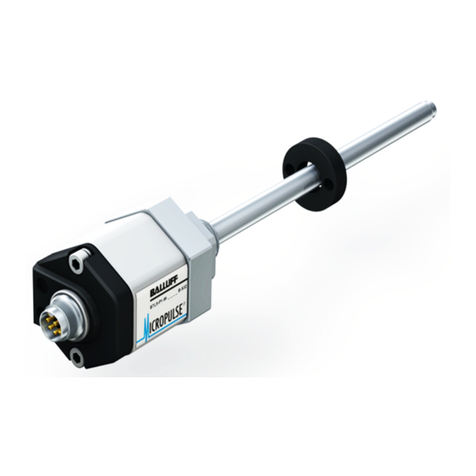
Balluff
Balluff BTL5-P1 Series user guide

Thyracont
Thyracont VSR53D operating instructions
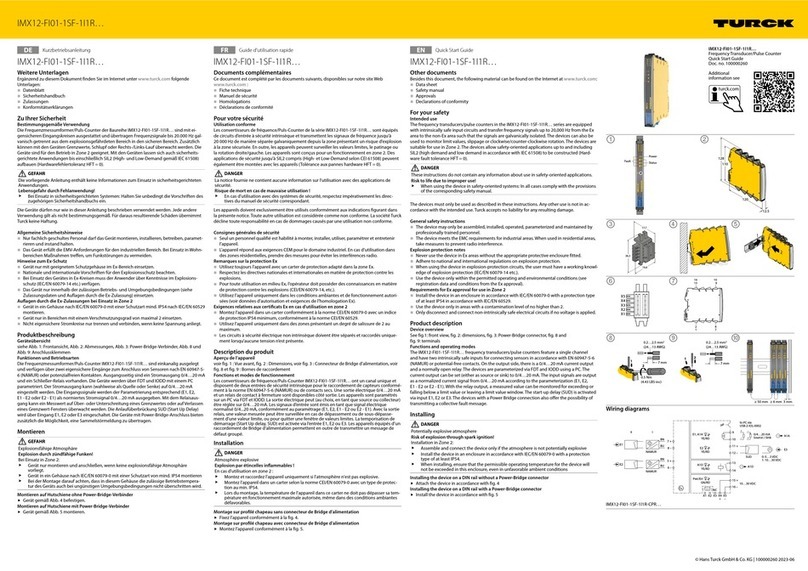
turck
turck IMX12-FI01-1SF-1I1R Series quick start guide
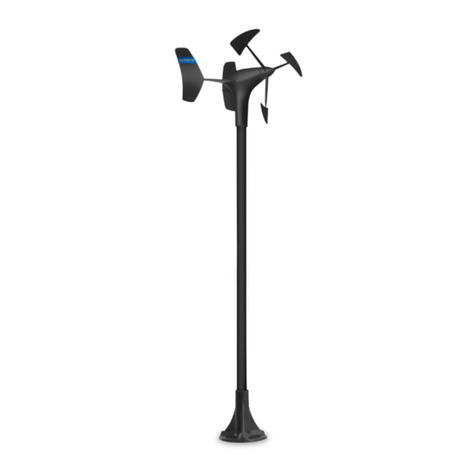
Garmin
Garmin gWind Race installation instructions
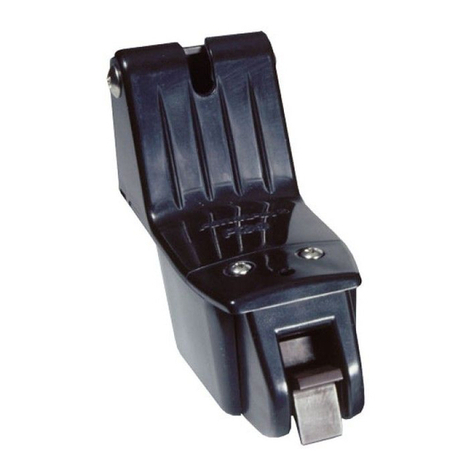
Airmar
Airmar TRIDUCER P39 Owner's guide & installation instructions

novotechnik
novotechnik RSM-2800 user manual
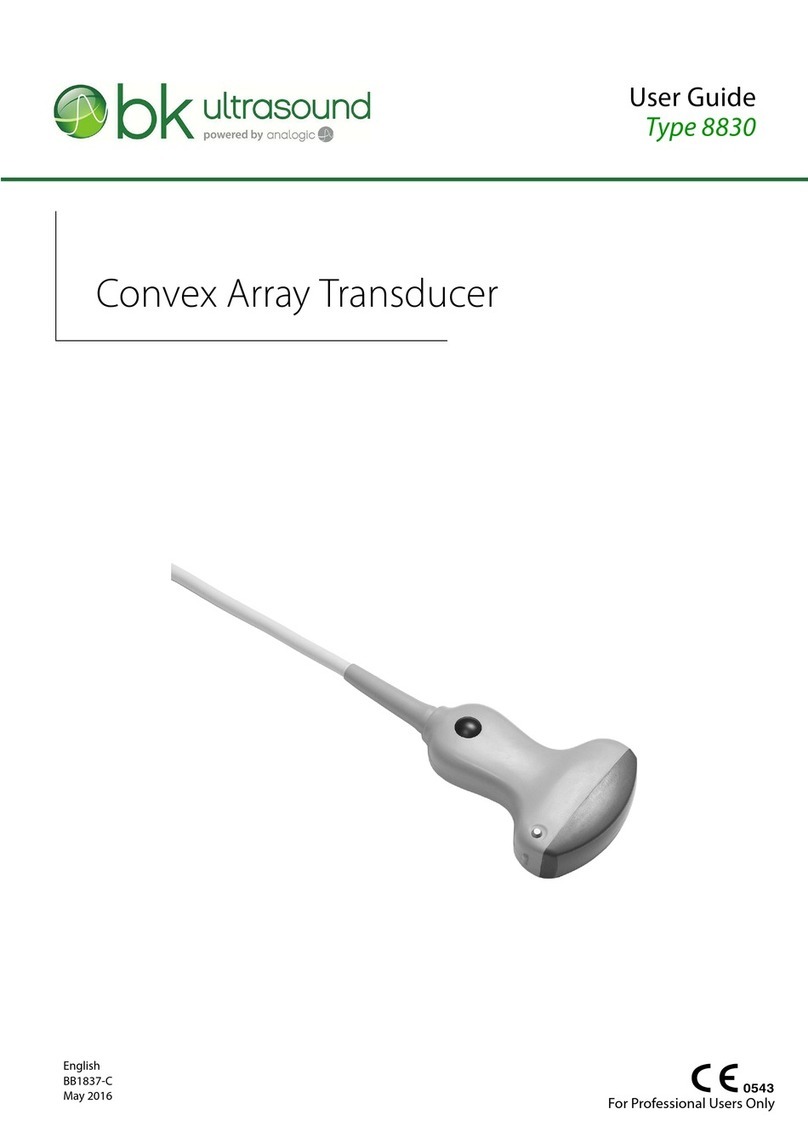
bk ultrasound
bk ultrasound 8830 user guide

HB-THERM
HB-THERM T24629-X Assembly instructions
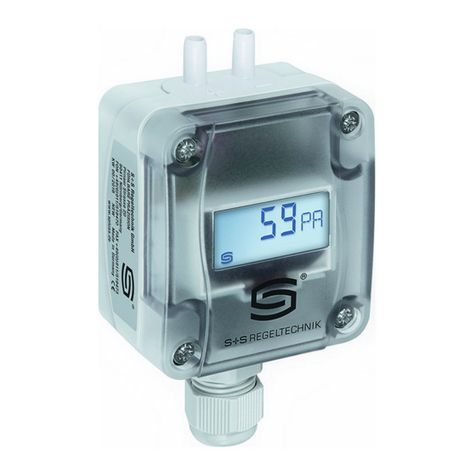
S+S Regeltechnik
S+S Regeltechnik PREMASGARD 111 Series Operating Instructions, Mounting & Installation
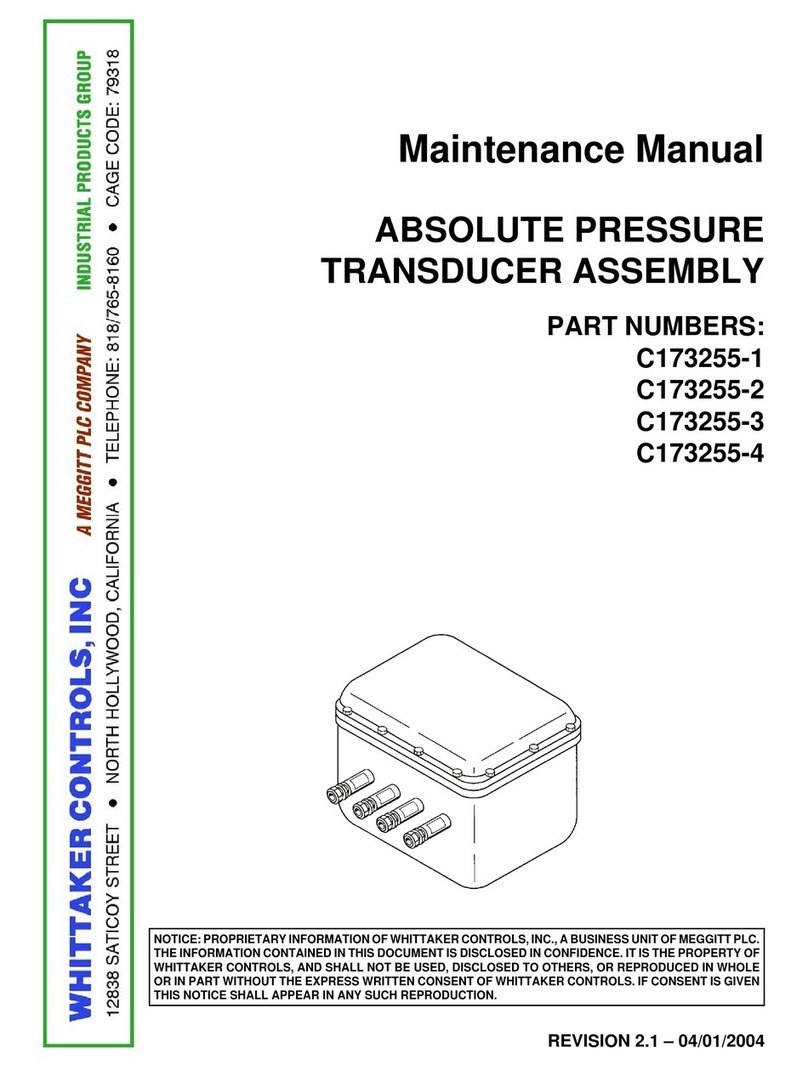
Meggitt
Meggitt Whittaker C173255-1 Maintenance manual
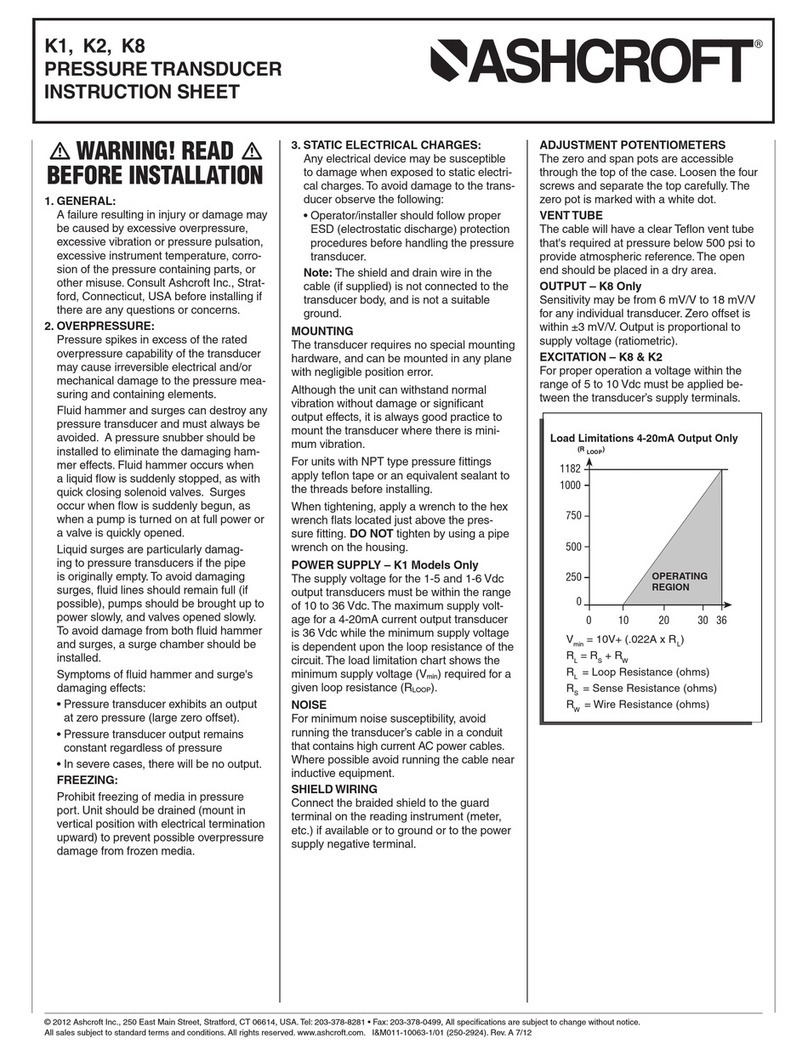
Ashcroft
Ashcroft k1 instruction sheet
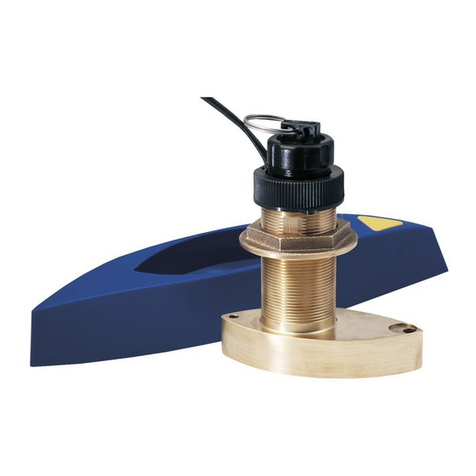
Airmar
Airmar TRIDUCER B744V Owner's guide & installation instructions

